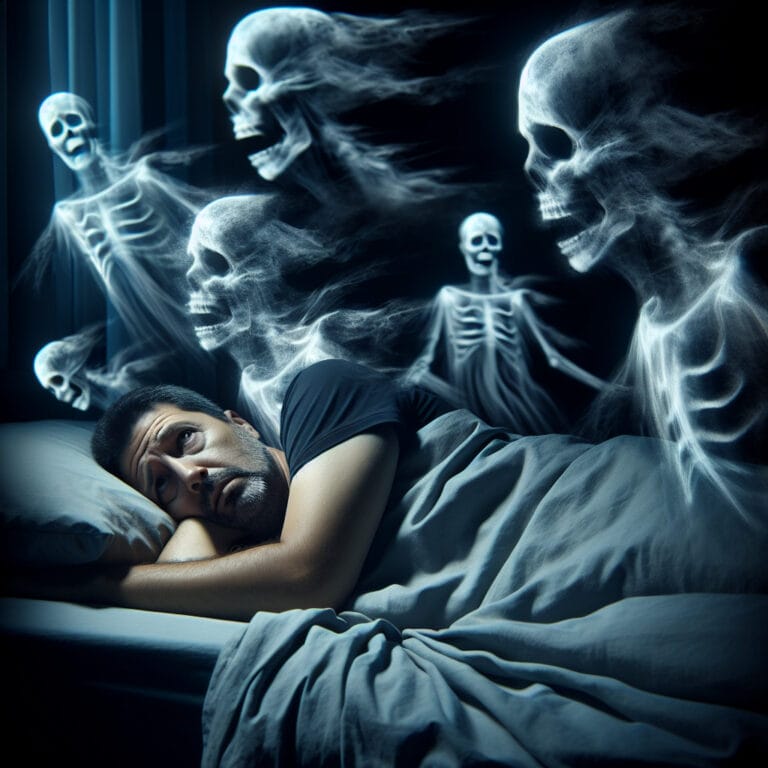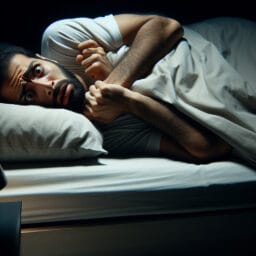
Understanding the Phenomenon: Defining Hypnopompic
Table of Contents
- Introduction to Hypnopompic Hallucinations
- The Science and Causes of Hypnopompic Hallucinations
- Symptoms and Diagnosis of Hypnopompic Hallucinations
- Treatment and Management of Hypnopompic Hallucinations
- Conclusion: Understanding and Managing Hypnopompic Hallucinations
- Frequently Asked Questions
Introduction to Hypnopompic Hallucinations
Managing hypnopompic hallucinations, a common sleep-related phenomenon, begins with gaining a comprehensive understanding of its nature and triggers. These vivid perceptual experiences occur during the transitional state from sleep to full waking characterized by heightened brain functions in prefrontal areas. They can range from simple visual hallucinations to complex scenarios that often dramatize the emotions or events of the previous day. Unlike REM dreams confined to deep sleep, hypnopompic visions generally unfold in the semi-conscious state prior to complete wakefulness.
It’s crucial to recognize that not all instances of these perceptions indicate underlying mental health conditions or clinical disorders. In fact, many people experience this without any associated pathology. Stress, anxiety, and sleep deprivation are common triggers, implying that alterations in sleep habits can prevent recurrences. However, frequent episodes or those accompanied by sleep paralysis – known as the incubus phenomenon – may warrant a visit to a sleep doctor for further assessment.
Understanding their connection with our brain activities during different stages of sleep is also pivotal. For instance, neural activation patterns during NREM and REM dream stages can influence these perceptions’ emotive contents and sensory modalities involving tactile sensations or even interaction with the external world.
While hypnopompic hallucinations might be unsettling due to their intensity compared to typical dreams or daytime hallucinations; knowledge about them empowers individuals towards effective management strategies such as maintaining good sleeping hygiene and seeking professional help when necessary.
The Science and Causes of Hypnopompic Hallucinations
The perplexing world of hypnopompic hallucinations is closely tied to the intricacies of our sleep mechanisms and brain functions. During REM sleep, a stage characterized by rapid eye movement and dreaming, our brains are almost as active as when we’re awake. This activity can sometimes spill over into the semi-conscious state prior to full waking, creating vivid sleep-related perceptions known as hypnopompic hallucinations. These visual hallucinations can range from simple geometric shapes or colors to complex scenes that often dramatize events from the previous day.
While they may be frightening or unsettling due to their intensity compared to typical dreams or daytime hallucinations, they are not always indicative of underlying mental health conditions or clinical disorders. Sleep deprivation is a common trigger for these perceptual experiences, with many people reporting increased frequency during periods of heightened stress or anxiety. Good sleep habits such as regular bedtime hours and avoiding caffeine before bed can aid in preventing these occurrences.
However, it’s worth noting the distinguishing features between hypnopompic and its counterpart – hypnagogic hallucinations – which occur during the transition from wakefulness to falling asleep rather than upon awakening. They both belong under the umbrella term ‘sleep-related phenomena’ but are differentiated by their timing in relation to states of consciousness leading up or down towards deep sleep.
Moreover, while most individuals experience isolated episodes unconcerned with any pathology; persistent instances accompanied by other symptoms such as sleep paralysis – termed ‘incubus phenomenon’ in clinical neurosciences – could be signs of serious underlying sleep disorders like narcolepsy or Parkinson’s disease. It is advisable for anyone experiencing frequent hypnopompic hallucinations along with additional symptoms like this disturbing inability move upon waking – an encounter with the external world that feels very real – consult a professional such as a sleep doctor for further investigation.
Treatment and Management of Hypnopompic Hallucinations
Contrary to popular perception, hypnopompic hallucinations are not exclusive to those with clinical disorders or underlying mental health conditions. These sleep-related perceptions can be experienced by anyone, especially during periods of stress or sleep deprivation. Hypnopompic hallucinations typically unfold in the semi-conscious state prior to full waking characterized by heightened brain functions, particularly in prefrontal areas responsible for reasoning and decision-making processes. It’s interesting how these visual hallucinations often dramatize events from the day previous, allowing our brains an avenue to process emotional contents via sensory perceptions.
The science behind these phenomena is deeply rooted in our sleep cycles – REM (Rapid Eye Movement) and NREM (Non-Rapid Eye Movement). Depending on when the neural activation happens – whether during deep NREM or REM dream stage – it could result in different types of hallucinations dreams. For instance, vivid tactile sensations may accompany these veridical perceptions if they occur near the onset of deep sleep.
However, chronic episodes that coincide with symptoms such as sleep paralysis – a terrifying experience often referred to as incubus phenomenon – might be indicative of serious sleep disorders like narcolepsy or Parkinson’s disease. In such cases, proactive measures must be taken including seeking help from a professional like a sleep doctor who can provide appropriate treatments tailored specifically for your condition. Implementing healthy sleep habits can also significantly reduce the frequency of these occurrences and their impact on your quality of life. Thus understanding and managing hypnopompic hallucinations becomes less daunting once you comprehend its intricacies and establish effective coping strategies.
Conclusion: Understanding and Managing Hypnopompic Hallucinations
The realm of sleep disorders extends beyond the commonly known insomnia into more complex phenomena like hypnopompic hallucinations. These perceptual experiences can transform the semiconscious state prior to full waking into a vivid drama, often echoing events or emotions from the previous day. Despite their intense nature compared to daytime hallucinations, they are not necessarily indicative of underlying mental health conditions. Factors such as stress and sleep deprivation can trigger these visual hallucinations that blur the line between REM dreams and wakefulness. Although alterations in sleep habits can help manage them, persistent instances paired with symptoms such as sleep paralysis – a terrifying experience known as incubus phenomenon – may signal serious sleep disorders warranting expert intervention from a professional like a sleep doctor. Recognizing this interplay between neural activation patterns during NREM and REM dream stage is crucial for understanding these veridical perceptions’ emotive content and sensory modalities involving tactile sensations or even interaction with the external world.


